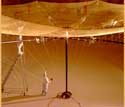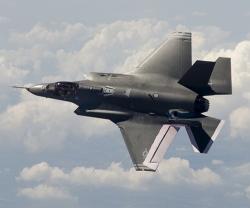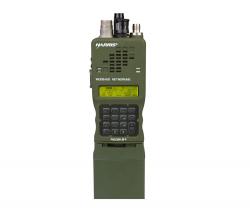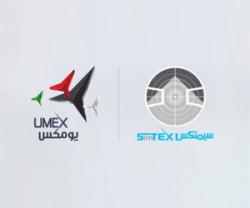Harris’ First Ka-Band Space Antenna
13.04.2011 North America
Harris Corporation, an international communications and information technology company, today introduced an unfurlable space antenna designed to support emerging requirements for high-throughput Ka-band satellites.
The new Harris Ka-band antenna greatly increases the gain and potential spot beams currently available to spacecraft manufacturers and service providers. The increased frequency reuse provided by the additional spot beams enables higher data rates required by providers of bandwidth-hungry services such as satellite Internet, HDTV and 3D TV, and by businesses that transfer large amounts of data between remote locations, such as oil and gas companies and maritime users.
The antenna features flight-proven design elements that have been refined during development and production for US government and commercial programs, including the application of reflective mesh, surface-shaping technology and thermally stable materials. The antenna's architecture leverages Harris' robust radial rib structure reflector design, 40 of which are currently in operation. The projected aperture ranges from 3.5 meters to 8 meters in diameter, with a compact stowed configuration suitable for most launch vehicles.
During launch, the Harris reflectors are stowed onboard the satellite much like an umbrella. Once in orbit, controllers execute a series of maneuvers, and then send commands to deploy an articulating boom and unfurl the reflector.
"This new Ka-band product is a natural extension of our existing offerings for larger apertures, and continues our 35-year legacy of providing high-performance antenna solutions with unmatched performance," said Sheldon Fox, Group President, Harris Government Communications Systems. "The Harris solution supports the ever-increasing global demand for higher bandwidth capacity."
The new Harris Ka-band antenna greatly increases the gain and potential spot beams currently available to spacecraft manufacturers and service providers. The increased frequency reuse provided by the additional spot beams enables higher data rates required by providers of bandwidth-hungry services such as satellite Internet, HDTV and 3D TV, and by businesses that transfer large amounts of data between remote locations, such as oil and gas companies and maritime users.
The antenna features flight-proven design elements that have been refined during development and production for US government and commercial programs, including the application of reflective mesh, surface-shaping technology and thermally stable materials. The antenna's architecture leverages Harris' robust radial rib structure reflector design, 40 of which are currently in operation. The projected aperture ranges from 3.5 meters to 8 meters in diameter, with a compact stowed configuration suitable for most launch vehicles.
During launch, the Harris reflectors are stowed onboard the satellite much like an umbrella. Once in orbit, controllers execute a series of maneuvers, and then send commands to deploy an articulating boom and unfurl the reflector.
"This new Ka-band product is a natural extension of our existing offerings for larger apertures, and continues our 35-year legacy of providing high-performance antenna solutions with unmatched performance," said Sheldon Fox, Group President, Harris Government Communications Systems. "The Harris solution supports the ever-increasing global demand for higher bandwidth capacity."
Previous PostRaytheon Wins Next-G SM-3 Interceptor Deal
Latest news
Latest events
Doha International Maritime Defence Exhibition & Conference (DIMDEX 2026)
19 - 22 Jan 2026Doha - QatarUMEX – SimTEX
20 - 22 Jan 2026ADNEC Centre Abu Dhabi, - United Arab EmiratesWorld Defense Show (WDS) 2026
08 - 12 Feb 2026Riyadh - Saudi ArabiaSAHA EXPO International Defence & Aerospace Exhibition
05 - 09 May 2026İstanbul Expo Center - Turkey






















